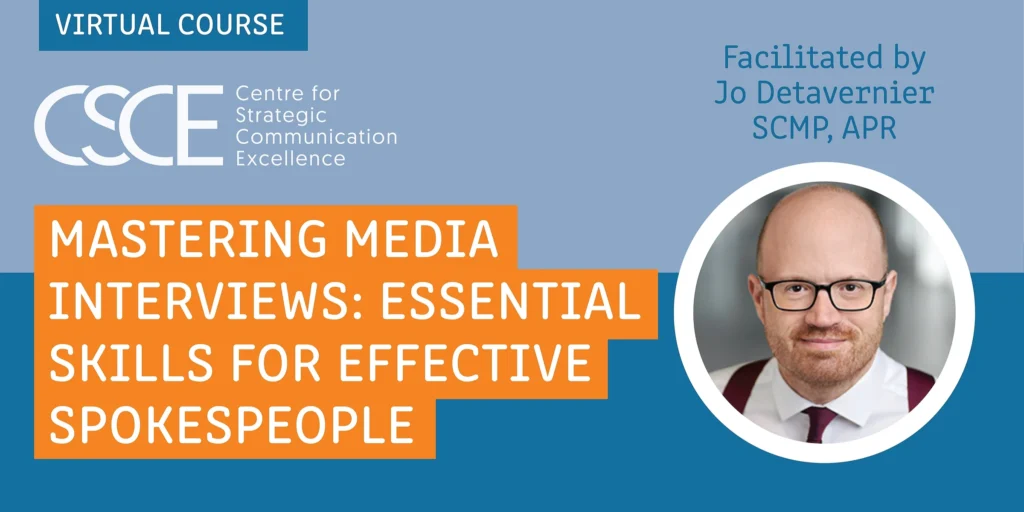In nature, monocultures are fragile.
A field of one single crop might look neat, but it’s vulnerable — one pest, one disease and the whole thing can be wiped out. By contrast, ecosystems with a mix of species are far more resilient. Plants cross-pollinate, share nutrients and create an environment where life can adapt to whatever comes next.
Communication is no different.
When we only draw ideas from our own profession or from people who think just like us, our strategies can become predictable, even stale. But when we cross-pollinate – taking cues from unexpected sources, connecting with people outside our usual circles, and exploring unfamiliar territory – our thinking becomes richer, more adaptable and better equipped to handle complexity.
I’ve seen this first-hand in my own work and through the many professional networks I’m part of. The most interesting breakthroughs often come from conversations that, at first, seem to have nothing to do with communication at all.
The echo chamber problem
It’s easy to stay in our lane.
Most of us follow communication leaders, attend industry conferences, read case studies about campaigns and talk to peers who share our professional language. That’s valuable, but when all our inputs look the same, our ideas eventually do too.
It’s the same problem organisations face when they only benchmark against their direct competitors. They might catch up, but they rarely leap ahead.
Why biology gets this right
Biodiversity isn’t just beautiful; it’s the foundation of survival.
Different species bring different strengths: some resist drought, others attract pollinators, others enrich the soil. The variety makes the whole system stronger and more adaptable.
Communication works the same way. The more variety in the perspectives and ideas we expose ourselves to, the more resilient and creative our strategies become. We start spotting patterns we’d miss in a monoculture, and we’re better equipped to respond when something unexpected happens.
Learning from other fields
So where can we find the pollen we need? Sometimes it’s as simple as paying attention to what’s happening in spaces far removed from our own.
Biologists know that species survive by adapting strategies from the environment around them, sometimes even copying traits from entirely different species. Communication professionals can do the same. The key is to observe how other industries solve problems and ask, “What could I take from this ecosystem and adapt for mine?”
From emergency services – In nature, some species survive by reacting instantly to threats. Think of a bird taking flight at the first sign of danger. Fire and ambulance crews work the same way, running regular scenario-based drills so they’re ready for anything.
In practice, hold short, low-pressure “comms drills” with your team, for example, simulate a social media backlash or sudden leadership change, so you can respond with precision and confidence when a real crisis hits.
From healthcare – Just as a plant allocates energy to its most vital parts during drought, hospitals use triage to focus resources where they’ll have the biggest impact.
In practice, when competing requests flood in, prioritise by business impact and urgency, not by who asked first. This ensures your attention goes to the most critical issues without exhausting your resources.
From hospitality – Some plants attract pollinators by making every part of the journey appealing, from scent to colour to the quality of the nectar. Great hotels do the same, designing every guest touchpoint from the welcome at the door to the thank-you note at checkout.
In practice, think through every step of your audience’s journey with your message, from the first hint to the follow-up, so each interaction strengthens connection and understanding.
And history shows cross-pollination has always driven adaptation: Gutenberg’s printing press was inspired in part by a wine press; baby incubators were modelled on poultry incubators. The best ideas often start somewhere else, borrowed, adapted and shaped into something that works in a new context.
I’ve seen this play out first-hand in my training rooms too. In one of my strategic communication management workshops, an internal communication lead from a manufacturing company shared how they’d borrowed the “pre-flight safety briefing” approach from airlines, replacing long, text-heavy onboarding materials with short, engaging briefings that gave new hires exactly what they needed for day one. In another session, a participant from a government agency described adapting the “live scoreboard” concept from sport – a highly visible, regularly updated display of progress to keep employees informed and motivated throughout a complex change program.
Making it a habit
Cross-pollination doesn’t happen by accident. You have to put yourself in situations where you’ll encounter different ideas and perspectives.
A few ways to start:
- Spend part of your learning time outside communication. Read publications your audience reads. Attend events in other industries.
- Join communities with mixed disciplines. Not every conversation needs to be with people who do what you do.
- Ask different questions. Instead of “How do other communication teams solve this?”, try “How would a hotel handle this?” or “What would a product designer do?”
- Build genuine relationships. The value isn’t just in swapping examples; it’s in having trusted people you can call when you’re trying to see a problem from another angle.
Why it matters now
The pace of change means we can’t afford to wait for best practices to be handed down from within our own profession. By the time they’re documented, they’re often already dated.
When you think like a biologist, constantly seeking new inputs, valuing diversity and encouraging exchange, you build resilience into your work. You create strategies that can survive shifts in audience behaviour, technology and organisational priorities.
And perhaps most importantly, you keep your own curiosity alive.
Because the moment we stop being curious, we stop growing.
In nature, cross-pollination ensures the health of the whole ecosystem. In communication, it does the same for our strategies, our organisations and ourselves.
So, look beyond your own field. Learn from the runway, the ward, the hotel lobby, the workshop floor. The next idea that changes your work might not come from a communication case study; it might come from somewhere you least expect.
I see it every day at the Centre for Strategic Communication Excellence (CSCE), the spark that happens when professionals connect across disciplines, geographies, and experiences. It’s in those sparks that real innovation begins.
If you want to experience it for yourself, join one of our upcoming CSCE events, from our monthly Spark forum to our strategic communication masterclasses. They’re designed to bring curious, talented professionals together to swap ideas, challenge assumptions, and take away inspiration you can use immediately in your work.





